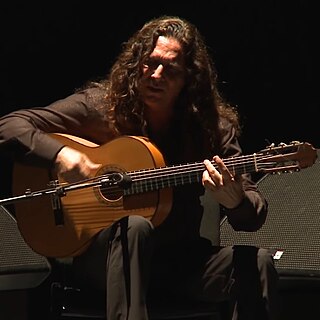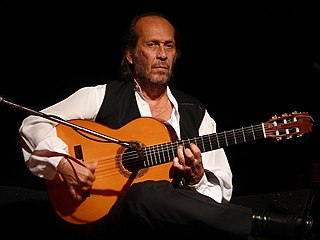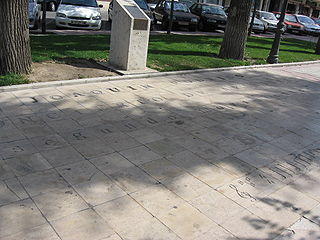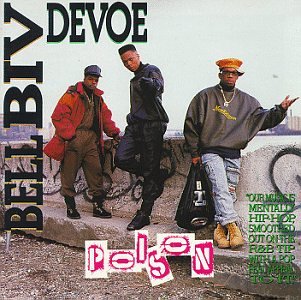
The classical guitar is a member of the guitar family used in classical music and other styles. An acoustic wooden string instrument with strings made of gut or nylon, it is a precursor of the modern acoustic and electric guitars, both of which use metal strings. Classical guitars derive from the Spanish vihuela and gittern of the fifteenth and sixteenth century. Those instruments evolved into the seventeenth and eighteenth-century baroque guitar—and by the mid-nineteenth century, early forms of the modern classical guitar.

Flamenco, in its strictest sense, is an art form based on the various folkloric music traditions of southern Spain, developed within the gitano subculture of the region of Andalusia, but also having a historical presence in Extremadura and Murcia. In a wider sense, it is a portmanteau term used to refer to a variety of both contemporary and traditional musical styles typical of southern Spain. Flamenco is closely associated to the gitanos of the Romani ethnicity who have contributed significantly to its origination and professionalization. However, its style is uniquely Andalusian and flamenco artists have historically included Spaniards of both gitano and non-gitano heritage.

A guitarist is a person who plays the guitar. Guitarists may play a variety of guitar family instruments such as classical guitars, acoustic guitars, electric guitars, and bass guitars. Some guitarists accompany themselves on the guitar by singing or playing the harmonica, or both.

Andrés Segovia Torres, 1st Marquis of Salobreña was a virtuoso Spanish classical guitarist from Linares, Spain. Many professional classical guitarists today were students of Segovia, or students of his students. Segovia's contribution to the modern-romantic repertoire not only included commissions but also his own transcriptions of classical or baroque works. He is remembered for his expressive performances: his wide palette of tone, and his distinctive musical personality, phrasing and style.

The music of Spain has a long history. It has played an important role in the development of Western music, and has greatly influenced Latin American music. Spanish music is often associated with traditional styles such as flamenco and classical guitar. While these forms of music are common, there are many different traditional musical and dance styles across the regions. For example, music from the north-west regions is heavily reliant on bagpipes, the jota is widespread in the centre and north of the country, and flamenco originated in the south. Spanish music played a notable part in the early developments of western classical music, from the 15th through the early 17th century. The breadth of musical innovation can be seen in composers like Tomás Luis de Victoria, styles like the zarzuela of Spanish opera, the ballet of Manuel de Falla, and the classical guitar music of Francisco Tárrega. Nowadays commercial pop music dominates.

José Fernández Torres, known as Tomatito, is a Spanish roma flamenco guitarist and composer. Having started his career accompanying famed flamenco singer Camarón de la Isla, he has made a number of collaborative albums and six solo albums, two of which have won Latin Grammy Awards.

Francisco Gustavo Sánchez Gómez, known as Paco de Lucía, was a Spanish virtuoso flamenco guitarist, composer, and record producer. A leading proponent of the new flamenco style, he was one of the first flamenco guitarists to branch into classical and jazz. Richard Chapman and Eric Clapton, authors of Guitar: Music, History, Players, describe de Lucía as a "titanic figure in the world of flamenco guitar", and Dennis Koster, author of Guitar Atlas, Flamenco, has referred to de Lucía as "one of history's greatest guitarists".

The Concierto de Aranjuez is a classical guitar concerto by the Spanish composer Joaquín Rodrigo. Written in 1939, it is by far Rodrigo's best-known work, and its success established his reputation as one of the most significant Spanish composers of the 20th century.

Les Luthiers is an Argentine comedy-musical group, very popular also in several other Spanish-speaking countries including Paraguay, Guatemala, Peru, Chile, Ecuador, Spain, Colombia, Mexico, Uruguay, Bolivia, Cuba, Costa Rica and Venezuela. They were formed in 1967 by Gerardo Masana, during the height of a period of very intense choral music activity in Argentina's state universities. Their outstanding characteristic is the home-made musical instruments, some of them extremely sophisticated, which they skillfully employ in their recitals to produce music and texts full of high class and refined humor. From 1977 until his death in 2007, they worked with Roberto Fontanarrosa, a renowned Argentine cartoonist and writer.
Radio Tarifa was a Spanish World music ensemble, combining Flamenco, Arab-Andalusian music, Arabic music, Moorish music and other musical influences of the Mediterranean, the Middle Ages and the Caribbean. The name of the ensemble comes from an imaginary radio station in Tarifa, a small town in the Spanish province of Cadiz, Andalusia, the closest part of Spain to Morocco. Instead of simply fusing musical styles as they are currently known, Radio Tarifa went back in time to the common past of those styles, before the final conquest of Granada in 1492, when the Moors and Jews were exiled from Spain. This invented style sheds light upon the real styles of Spain, most notably flamenco, although the band rejected all musical purism, preferring to mix arrangements of traditional compositions with their own melodies and combining instruments from Ancient Egypt, classical Greek and Roman times with modern saxophones and electric bass.

Ramírez Guitars is a Spanish manufacturer of professional, concert-quality classical and flamenco guitars. Five generations of the Ramírez family have produced Ramirez guitars.

A flamenco guitar is a guitar similar to a classical guitar but with thinner tops and less internal bracing. It usually has nylon strings, like the classical guitar, but it generally possesses a livelier, more gritty sound compared to the classical guitar. It is used in toque, the guitar-playing part of the art of flamenco.
A person who is specialized in the making of stringed instruments such as guitars, lutes and violins is called a luthier.

Poison is the debut studio album from American R&B/hip hop group Bell Biv DeVoe, released March 20, 1990 on MCA Records.

Rafael Riqueni del Canto, is a Spanish guitar player and composer. He is considered as one of the biggest names or “Maestros” in flamenco guitar history. At age fourteen, he won the two main national awards for flamenco guitar in Spain. As an adult, he has won the most prestigious flamenco music awards in Spain, including: Premio Andalucía de Cultura, Premio Nacional de la Crítica, Giraldillo a la Maestría de la XVIII Bienal de Flamenco y el Premio AIE. In 2017, he was awarded with XXXI Compás del Cante, this award is always referred to by the Spanish media as the "Flamenco Nobel prize".

Flamenco: Fire and Grace is the first flamenco collection from Narada Productions featuring some of flamenco's most prominent performers showcasing both instrumental and vocal. Its liner notes contains a romantic description of flamenco by Brook Zen and brief biographies of each performer as they appear in sequence.

The Algerian mandole is a steel-string fretted instrument resembling an elongated mandolin, widely used in Algerian music such as Chaabi, Kabyle music and Nuubaat.

Amir John Haddad is a German-Spanish flamenco guitarist and multi-instrumentalist, based in Spain since 1997. He was the official oud, bouzouki and guitar player for Radio Tarifa for almost ten years and in that role received a nomination for Best Folk Album at the Latin Grammy Awards of 2004.

Michael Laucke was a Canadian classical, new flamenco and flamenco guitarist and composer. Starting at the age of thirteen, Laucke gave professional snooker demonstrations and his winnings allowed him to take trips from Montreal to New York City to study the classical guitar with Rolando Valdés-Blain. With a career spanning over 30 years, Laucke began performing in 1965, recording the first of 16 albums in 1969, and toured in 25 countries. In 1971, he performed his first of many concerts at the National Gallery of Art in Washington, D.C. His first concert in New York, where he also first met Senator Claiborne Pell, took place in 1972.

















